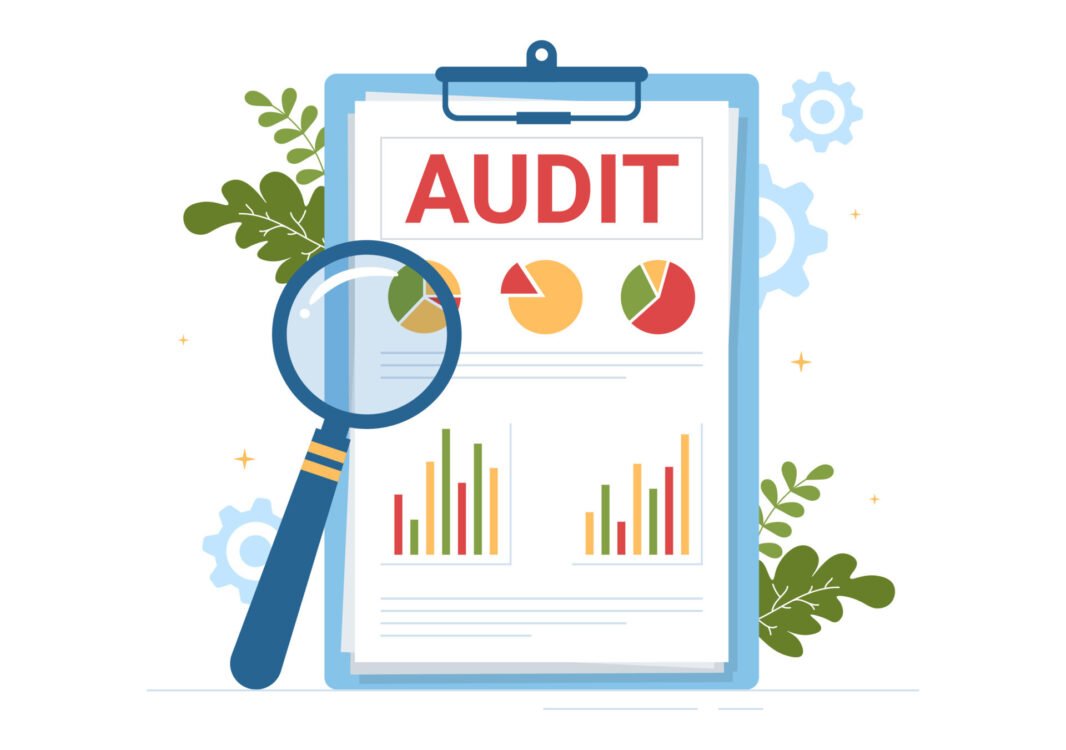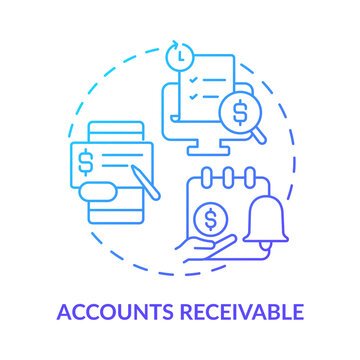Logistics Solutions in the USA: Ultimate Guide to Beating Supply Chain Disruptions in 2025
Introduction Logistics solutions in the USA are becoming the backbone of business survival in 2025. With frequent supply chain disruptions—ranging from labor shortages and fuel price hikes to port congestion and extreme weather—American companies need smarter ways to keep operations running smoothly. Instead of reacting to crises, businesses are now adopting proactive logistics strategies powered by technology, automation, and third-party expertise. These solutions are helping wholesalers, distributors, retailers, and manufacturers not only overcome disruptions but also build stronger, more resilient supply chains. “According to the U.S. Department of Transportation, logistics plays a vital role in ensuring economic stability across the U.S.” The State of Supply Chain Disruptions in the USA Disruptions have become the “new normal” for U.S. businesses. Some common issues include: Labor shortages in trucking, warehousing, and ports Fuel price volatility increasing transportation costs Port congestion at major U.S. entry points Natural disasters such as hurricanes, floods, and wildfires Global political instability affecting imports and exports Without strong logistics solutions, these disruptions can lead to stockouts, revenue losses, and damaged customer relationships. “The Federal Motor Carrier Safety Administration reports that driver shortages remain a critical challenge for freight and logistics providers.” Why Businesses Need Smarter Logistics in 2025 In today’s competitive market, companies cannot afford inefficiencies. Logistics solutions help businesses: Gain real-time visibility across the supply chain Respond faster to sudden disruptions Lower costs through optimization and automation Meet increasing customer expectations for speed and reliability A resilient logistics system is now as important as product quality or pricing. Key Logistics Solutions to Overcome Supply Chain Disruptions 1. Digital Supply Chain Platforms Cloud-based systems integrate procurement, transportation, and inventory into one dashboard, enabling businesses to monitor and respond instantly to issues. 2. Artificial Intelligence and Predictive Analytics AI can forecast demand, identify potential disruptions, and recommend proactive solutions—such as rerouting shipments before delays occur. 3. IoT and Real-Time Tracking GPS-enabled tracking ensures businesses know the exact location and condition of goods, reducing theft, spoilage, and uncertainty. 4. Warehouse Automation Robotics, automated picking systems, and smart storage reduce human error, speed up order fulfillment, and lower labor dependency. 5. Third-Party Logistics (3PL) Partnerships Working with experienced 3PL providers gives companies access to wider networks, technology, and flexibility during demand fluctuations. 6. Sustainable Logistics Electric vehicles, alternative fuels, and green warehousing not only reduce emissions but also lower long-term costs, helping businesses future-proof operations. Last-Mile Delivery Innovations The last mile remains one of the most expensive and disruption-prone parts of logistics. In 2025, companies are overcoming challenges by: Using AI-powered route optimization to cut delivery times Setting up micro-fulfillment centers in urban areas Leveraging crowdsourced delivery platforms for flexibility Building Resilient Supply Chains To prepare for future disruptions, U.S. companies are adopting: Supplier diversification – Reducing dependency on one region or vendor Nearshoring and reshoring – Moving manufacturing closer to U.S. markets Inventory buffers – Keeping critical stock in regional warehouses Disaster recovery planning – Establishing backup routes and contingency partners Case Studies: U.S. Companies Overcoming Disruptions Retail Giant – Adopted predictive analytics to anticipate port delays, reducing delivery disruptions by 30%. Pharmaceutical Distributor – Leveraged cold chain IoT monitoring to maintain compliance during heatwaves. Food Supplier – Partnered with a 3PL provider to scale operations during labor strikes, ensuring uninterrupted deliveries. The Future of Logistics Solutions in the USA Looking ahead, businesses can expect to see: Drones and autonomous trucks reducing delivery times Blockchain for supply chain transparency Logistics-as-a-Service (LaaS) models making advanced tools accessible to smaller businesses Conclusion Logistics solutions in the USA are no longer just about moving goods from one point to another—they are about building resilient, intelligent, and future-ready supply chains that can withstand constant disruptions. The challenges of 2025, from unpredictable global events to local labor shortages and rising transportation costs, have made it clear that traditional approaches are no longer enough. Businesses that continue to rely on outdated logistics practices will struggle with delays, inefficiencies, and dissatisfied customers. On the other hand, companies that embrace digital platforms, AI-driven predictive analytics, IoT tracking, automation, and third-party logistics partnerships are turning disruptions into opportunities for growth. Wholesalers and distributors can streamline operations by integrating smart warehouse systems, while retailers and manufacturers can secure customer loyalty through faster and more reliable deliveries. Sustainable logistics—powered by electric vehicles, green warehousing, and eco-friendly packaging—is also becoming a competitive advantage in today’s market where both consumers and regulators demand accountability. Perhaps the most important lesson is that logistics is no longer a back-office function; it is a strategic business driver. By adopting the right logistics solutions, U.S. companies can: Reduce operational costs and waste Improve supply chain visibility and transparency Strengthen customer relationships with reliability Build flexibility to withstand any future disruptions As we move further into 2025, the companies that view logistics as an investment—rather than an expense—will be the ones leading their industries. Whether it’s through advanced technology, strategic partnerships, or sustainable practices, the time to act is now. In short, logistics solutions in the USA are the key to overcoming supply chain disruptions, staying competitive, and securing long-term growth. Businesses that prioritize innovation today will be tomorrow’s market leaders.
Read MoreB2B Logistics Solutions in the USA: Streamlining Operations for Wholesalers and Distributors
Introduction In today’s fast-moving U.S. market, wholesalers and distributors play a critical role in connecting manufacturers with retailers and other businesses. However, with rising transportation costs, global supply chain disruptions, and increasing customer expectations, managing logistics has become more complex than ever. This is where B2B logistics solutions come in. By leveraging technology, third-party providers, and data-driven strategies, wholesalers and distributors can streamline operations, cut costs, and stay competitive. In this article, we’ll explore how modern logistics solutions in the USA are transforming wholesale and distribution, the challenges businesses face, and practical ways to build a more efficient supply chain. The State of B2B Logistics in the USA The U.S. logistics industry is one of the largest in the world, valued at over $2 trillion annually. Wholesale trade accounts for a huge portion of this, covering everything from food distribution to technology components. But wholesalers and distributors are facing new realities: Post-pandemic supply chain disruptions Labor shortages in trucking and warehousing Fuel price volatility High demand for faster deliveries Without modern logistics solutions, these challenges can quickly lead to lost revenue and dissatisfied customers. Why Logistics Solutions Are Essential for Wholesalers and Distributors Efficient logistics is no longer optional—it’s a competitive necessity. Here’s why: Inventory complexity – Managing thousands of SKUs across multiple warehouses requires precision. Customer expectations – Retailers and businesses expect shipments faster than ever. Rising costs – Fuel, labor, and real estate costs continue to climb. Regulations – Compliance with U.S. transport, safety, and environmental laws adds layers of complexity. A robust logistics strategy can address these issues while creating long-term value. Benefits of B2B Logistics Solutions in the USA Improved Efficiency – Automated systems reduce manual errors and streamline processes. Cost Savings – Optimized routes, warehouse automation, and bulk shipping lower expenses. Real-Time Visibility – IoT and GPS tracking ensure transparency at every step. Customer Satisfaction – Reliable, on-time deliveries strengthen business relationships. Risk Management – Data analytics helps predict delays and disruptions. Technology-Driven Logistics Solutions Modern B2B logistics in the USA heavily relies on technology. Some key innovations include: Artificial Intelligence (AI) – Predicts demand, manages inventory, and improves routing. Cloud-based logistics platforms – Provide centralized management for shipments, invoices, and customer communication. Internet of Things (IoT) – Enables real-time monitoring of fleet, warehouse, and even product conditions (ideal for perishable goods). Robotics and automation – Speed up picking, packing, and loading processes in warehouses. Last-Mile Delivery Solutions for Wholesalers Although last-mile delivery is often discussed in e-commerce, it is equally vital for wholesalers. Retailers expect frequent and timely shipments to avoid stockouts. Solutions include: Partnering with 3PL providers that specialize in last-mile efficiency. Route optimization software to minimize fuel costs. Micro-warehousing closer to urban centers for faster delivery. Warehouse and Inventory Management For wholesalers, warehouses are the backbone of logistics. Effective solutions include: Automated Storage and Retrieval Systems (ASRS) – Improve storage efficiency. RFID and Barcode Tracking – Increase accuracy in inventory counts. AI-powered Demand Forecasting – Prevent overstocking and stockouts. Efficient warehouse operations directly translate into lower costs and better customer satisfaction. Sustainable Logistics Solutions in the USA Sustainability is no longer just a buzzword; it’s a business requirement. Customers, investors, and regulators expect eco-friendly practices. Electric trucks and alternative fuels are reducing carbon footprints. Eco-friendly packaging minimizes waste. Energy-efficient warehouses cut long-term operating costs. Adopting green logistics not only helps the planet but also attracts environmentally conscious clients. Role of Third-Party Logistics (3PL) Outsourcing logistics is becoming increasingly popular among U.S. wholesalers and distributors. Advantages of 3PL: Access to advanced technology without heavy investment Scalability during seasonal demand peaks Expertise in compliance, customs, and cross-border trade By partnering with 3PL providers, businesses can focus more on core operations while leaving logistics management to specialists. Cross-Border Logistics Solutions Many U.S. distributors deal with suppliers and buyers in Canada and Mexico, making cross-border logistics critical. Customs compliance – Avoiding delays at borders USMCA trade benefits – Lower tariffs and easier trade flows Bilingual customer service – Facilitating smoother operations Proper cross-border planning ensures efficiency and avoids costly delays. Overcoming Supply Chain Disruptions Unexpected events like hurricanes, port strikes, or global crises can disrupt supply chains. U.S. wholesalers are adopting: Disaster recovery plans Diversified supplier networks Predictive analytics tools to anticipate risks Cost Optimization Strategies Keeping logistics affordable is key for wholesalers and distributors. Some strategies include: Route planning & fuel efficiency Consolidated shipping to reduce costs per unit Carrier contract negotiation for better rates Case Studies: U.S. Wholesalers Using Modern Logistics Food Distributor – Leveraged cold chain logistics to maintain freshness across states. Technology Wholesaler – Used AI-powered demand forecasting to reduce inventory costs by 20%. Choosing the Right Logistics Partner in the USA Key factors to consider: Technological capabilities Experience with wholesale/distribution Scalability and flexibility Strong customer support The Future of B2B Logistics Solutions in the USA Drones & autonomous trucks will speed up deliveries. Data-driven decision-making will become the norm. Logistics-as-a-Service (LaaS) will give businesses flexibility without heavy investments. Conclusion For wholesalers and distributors in the USA, logistics is no longer just about moving goods—it’s about building smarter, faster, and more resilient supply chains. By adopting B2B logistics solutions—from advanced technologies to 3PL partnerships—businesses can cut costs, improve efficiency, and deliver the reliability their partners expect.
Read MoreTailored Audit Solutions: 4 Stages of Growth Explained
The journey from a small startup to a fully scaled company is exciting — but it’s also full of financial and operational complexities. Each growth stage comes with unique challenges, and one area that often gets overlooked is auditing. Whether you’re just getting your business off the ground or managing a thriving mid-sized enterprise, tailored audit solutions ensure your financial health, compliance, and investor confidence remain intact. In this guide, we’ll explore how audit needs evolve through different business stages, and how you can implement the right solutions at each step. Why One-Size-Fits-All Doesn’t Work in Auditing Many business owners assume that audits are the same for every company, but that’s far from the truth. The requirements, scope, and complexity of an audit depend on factors like: Business size and revenue Industry-specific compliance requirements Investor and lender expectations Internal process maturity All tailored audit solutions should comply with AICPA auditing standards to maintain professional integrity. A startup’s needs differ vastly from a scaleup’s — which is where tailored audit solutions come in. Stage 1: Startups — Building a Strong Financial Foundation Audit Focus:At this stage, formal audits may not be legally required, but early adoption of financial review processes builds credibility. Tailored Audit Solutions for Startups: Bookkeeping Review Audits – Ensures accurate records for tax filings. Compliance Checkups – Basic checks for state and federal requirements. Pre-Investment Financial Reviews – Helps attract angel investors and venture capital. Software Recommendation: Cloud-based tools like QuickBooks Online + entry-level audit checklists. Why It Matters:Investors want transparency. Even without a legal mandate, early audits signal professionalism and reduce the risk of future issues. Stage 2: Emerging Growth — Preparing for Bigger Stakes Audit Focus:As revenue grows, so does operational complexity. Lenders, investors, and regulators will expect stronger financial oversight. Tailored Audit Solutions for Emerging Growth Businesses: Limited-Scope Audits – Focus on high-risk areas like cash flow and inventory. GAAP Compliance Audits – Ensures adherence to U.S. Generally Accepted Accounting Principles. Internal Control Assessments – Identifies weaknesses before they become costly. Software Recommendation: Audit Board or CCH ProSystem fox for structured engagements. Why It Matters:Mistakes at this stage can scare off potential Series A/B investors or cause tax and compliance headaches. Stage 3: Scaleups — Complex Operations, Higher Risks Audit Focus:With multiple revenue streams, large teams, and possibly international operations, scaleups face more intense scrutiny. Tailored Audit Solutions for Scaleups: Full External Financial Audits – Annual independent verification of financial statements. SOX Compliance Audits – If publicly traded or preparing for IPO. IT & Cybersecurity Audits – Critical for tech-driven businesses. Operational Audits – Reviews efficiency and cost-effectiveness of business processes. Software Recommendation: CaseWare IDEA or TeamMate+ Audit for enterprise-level analytics. Why It Matters:Scaling introduces risk. Thorough, tailored audits maintain trust with stakeholders, especially when preparing for IPO, mergers, or acquisitions. Stage 4: Continuous Growth — Maintaining Excellence Audit Focus:After reaching scale, the challenge shifts from growth to sustainability and efficiency. Tailored Audit Solutions for Mature Businesses: Continuous Auditing with AI – Ongoing risk detection through automated systems. Regulatory Audits – Keeps the company compliant with evolving laws. Sustainability Audits – ESG-focused reviews to meet investor and public expectations. Software Recommendation: Mind Bridge Ai Auditor for continuous monitoring. Why It Matters:Consistency in audit practices protects reputation, avoids fines, and improves decision-making. The Benefits of Tailored Audit Solutions at Every Stage No matter your growth phase, customized audits: Improve decision-making with accurate financial data Reduce risk through early issue detection Increase investor and lender confidence Ensure compliance with U.S. laws and industry standards Save time with relevant, stage-appropriate tools How to Choose the Right Tailored Audit Solution for Your Stage Assess Your Current Needs – Revenue, team size, compliance requirements. Identify High-Risk Areas – Cash management, inventory, IT security. Pick the Right Tools – Cloud vs. desktop, automation features, integration options. Work with Experienced Auditors – Choose professionals who understand your industry and stage. Plan for the Next Stage – Implement scalable solutions that grow with your business. Final Thoughts The audit strategy that works for a 5-person startup won’t suit a 500-person scaleup. By adopting tailored audit solutions for each growth stage, you’ll not only stay compliant but also position your business for long-term success. Think of audits as more than a regulatory checkbox — they’re a growth tool, an investor magnet, and a safeguard for your company’s future.
Read MoreStreamline Your Finances: Invoice Processing Solutions for Modern USA Businesses
In the world of modern business, efficiency and accuracy are essential — especially when it comes to managing your invoices. If your accounts payable department still relies on manual processes, you’re at risk of costly errors, missed payments, and damaged vendor relationships. This is where Invoice Processing Solutions come into play. For USA-based businesses looking to scale, switching to automated invoice processing can lead to smoother operations, quicker payments, and better cash flow management. What Is Invoice Processing? Invoice processing is the complete cycle of receiving, validating, approving, and paying invoices from vendors. It involves: Receiving invoices (paper, email, or electronic) Capturing data from each invoice Validating invoice details against purchase orders and receipts Getting approval from the right department or team member Processing payment to the vendor Recording the transaction in accounting software When done manually, this process is time-consuming and prone to human error. That’s why automated Invoice Processing Solutions are becoming essential for businesses in the USA. Common Challenges in Manual Invoice Processing Delayed approvals due to paper shuffling Duplicate payments from processing the same invoice more than once Lost invoices buried in email or paperwork Missed payment deadlines leading to late fees Fraudulent invoices slipping through the cracks Benefits of Automated Invoice Processing Solutions ✅ Faster Invoice Approvals Automated systems use workflows that route invoices to the right approvers instantly. No more chasing signatures or dealing with bottlenecks. ✅ Reduced Human Errors Optical Character Recognition (OCR) and AI-based tools extract data from invoices accurately, eliminating manual entry errors. ✅ Improved Cash Flow Faster invoice processing helps you take advantage of early payment discounts and avoid late fees — improving overall cash flow. ✅ Fraud Prevention Built-in validation tools check for duplicate invoices, suspicious activity, and mismatches between invoices and purchase orders. ✅ Easy Audit Trails All invoice actions — from receipt to approval — are logged and searchable. This makes financial audits smoother and more transparent. ✅ Integration with Accounting Systems Top solutions integrate directly with platforms like QuickBooks, Xero, SAP, and Oracle, syncing data in real-time. Top Features to Look for in Invoice Processing Software Feature Description OCR Technology Automatically extracts text from scanned or PDF invoices Approval Workflows Routes invoices to the right department automatically Duplicate Detection Alerts for repeat or identical invoices PO Matching Compares invoices with purchase orders to validate accuracy Mobile Access Allows teams to approve invoices from anywhere Analytics Dashboard Provides insight into invoice status and AP performance Who Needs Invoice Processing Solutions? While large enterprises were early adopters of automation, now small and mid-sized businesses in the USA are rapidly embracing invoice processing tools, including: Retail businesses eCommerce companies Logistics & transportation firms Freelancers & agencies Healthcare providers Professional service firms If your business processes more than 20 invoices a month, automating can save significant time and money. Popular Invoice Processing Tools for US Businesses Here are some leading tools to consider: Bill.com – Ideal for small to medium-sized businesses Tipalti – Great for companies that pay vendors globally Stampli – Offers AI-powered invoice approvals AvidXchange – Designed for mid-sized to large businesses Zoho Invoice – A good option for freelancers and startups Each offers different pricing, features, and integrations, so choose based on your unique business needs. How to Implement Invoice Automation Step 1: Evaluate Your Current Process Identify bottlenecks — such as delayed approvals or frequent errors — in your current invoice workflow. Step 2: Choose the Right Tool Compare software based on your business size, invoice volume, and accounting system compatibility. Step 3: Digitize Vendor Invoicing Encourage vendors to send invoices in electronic format (PDF, email, or EDI) for seamless processing. Step 4: Train Your Team Ensure all team members know how to use the new system and follow the updated approval process. Step 5: Monitor and Optimize Use reporting features to track KPIs like approval time, error rate, and on-time payment percentage. Cost vs. ROI: Is It Worth It? While invoice automation tools often come with monthly or yearly subscriptions, the return on investment is clear: Save 60-80% on processing costs per invoice Reduce late payment fees Increase early-payment discounts Improve vendor satisfaction and relationships Most businesses recover their investment within the first few months. Final Thoughts: Make the Switch Today Invoicing is more than just paying bills — it’s a vital part of your company’s financial engine. If you’re still handling invoices manually, it’s time to explore digital Invoice Processing Solutions. Automation not only saves time and reduces errors but also puts your business in a stronger position for long-term growth.
Read MoreHow an Account Audit Can Strengthen Your Business Compliance in the USA
In today’s fast-paced business world, staying compliant with financial regulations is non-negotiable. An account audit isn’t just a regulatory requirement — it’s a powerful tool that can uncover inefficiencies, prevent fraud, and foster trust with stakeholders. Whether you’re a startup or an established enterprise in the USA, regular audits can safeguard your company’s future. What Is an Account Audit? An account audit is a comprehensive review of your financial records, statements, and internal controls. This process can be: Internal – Conducted by in-house accounting staff or internal audit teams External – Performed by independent CPA firms or third-party auditors The goal is to ensure that all financial data is accurate, complete, and in accordance with accounting standards such as GAAP (Generally Accepted Accounting Principles) in the United States. Why Account Audits Are Essential for US Businesses 1. Regulatory Compliance The IRS, state agencies, and industry-specific regulators require accurate reporting. Failing to comply with tax and audit regulations can result in: Hefty fines Business closure Loss of licenses or certifications 2. Fraud Detection and Prevention Audits help uncover: Embezzlement Misstatements Financial manipulation By tightening internal controls, businesses can reduce the chances of fraud before it becomes a major issue. 3. Investor & Stakeholder Confidence An external audit builds trust with: Investors Lenders Partners They see audited statements as proof of financial health and transparency. 4. Better Financial Decisions When your financials are accurate, you can make smarter decisions about: Budgeting Hiring Expansion Investment Types of Account Audits in the USA ✅ Financial Statement Audit This is the most common type. It provides a detailed opinion on the fairness of your financial statements. ✅ Compliance Audit Checks whether your business is following applicable rules, tax laws, and financial reporting standards. ✅ Operational Audit Focuses on the efficiency and effectiveness of business operations. ✅ Forensic Audit Conducted when there is suspicion of fraud or financial crime. When Should You Schedule an Account Audit? Here are key times when a business should consider an audit: Annually – As a best practice, especially if required by stakeholders Before Seeking Investment or Loan – To build credibility During Mergers or Acquisitions – Ensures accurate valuation When Changing CFO or Accounting Firms – For smooth transition After Rapid Growth or Major Changes – To recalibrate systems Internal Audit vs. External Audit: What’s the Difference? Feature Internal Audit External Audit Conducted By In-house staff Independent third-party auditors Purpose Improve operations & compliance Provide assurance to stakeholders Frequency Ongoing or periodic Usually annually Reporting To Management Shareholders, regulators, investors Both types are valuable and often used together for full financial transparency. How to Prepare for an Account Audit Preparing for an audit doesn’t have to be stressful if you stay organized. Here’s what to do: 🔹 Gather Financial Documents Balance sheet Income statement Bank statements General ledger Tax returns 🔹 Review Internal Controls Ensure your accounting systems have checks and balances to prevent errors and fraud. 🔹 Assign a Point of Contact Choose someone (like your CFO or accountant) to work closely with the auditors and answer any questions. 🔹 Conduct a Pre-Audit Check Run a mock audit or review to find and fix discrepancies before the real audit begins. Common Audit Mistakes to Avoid Poor Record-Keeping – Leads to red flags and delays Inconsistent Accounting Methods – Violates GAAP and may cause penalties Non-Compliance with Tax Laws – Could trigger an IRS audit or legal issues Overreliance on Manual Processes – Increases risk of human error Switching to digital bookkeeping and audit-ready tools can help avoid these mistakes. Benefits of Hiring a Professional Audit Service in the USA Working with a professional accounting or auditing firm in the U.S. ensures: Up-to-date knowledge of federal and state laws Unbiased insights into your financial health Professional documentation that can be used for loans or investors Audit defense support if you’re ever reviewed by the IRS Final Thoughts: Make Audits a Strategic Asset Account audits shouldn’t be seen as a burden — they’re a strategic advantage. They can help your business operate more efficiently, comply with the law, and prepare for future growth. Whether you’re a small business or a growing enterprise, regular audits ensure you’re always on solid financial ground.
Read MoreAccounts Receivable in Cash Flow Forecasting: The Critical Role for U.S. Companies
The Critical Role of Accounts Receivable in Cash Flow Forecasting for U.S. Companies In today’s volatile business environment, maintaining a healthy cash flow is more than a financial goal — it’s a necessity. One often underestimated factor that plays a key role in cash flow forecasting is accounts receivable (AR). For U.S. companies, especially small to mid-sized enterprises, understanding the role of accounts receivable in cash flow forecasting can be the difference between thriving and struggling. Understanding Accounts Receivable (AR) Accounts receivable refers to the money your customers owe for goods or services delivered on credit. For U.S. companies, AR reflects expected future cash inflows and sits as a current asset on the balance sheet. Every unpaid invoice represents future cash — but when that cash will actually arrive is often uncertain. What Is Cash Flow Forecasting? Cash flow forecasting involves estimating how much money will flow in and out of your business over a period. It helps U.S. businesses: Predict potential cash shortfalls Plan for expansion or cost-cutting Make confident financial decisions The two components are: Cash inflows (revenue, loans, AR collections) Cash outflows (expenses, debt repayments, payroll) How Accounts Receivable Affects Cash Flow Accounts receivable directly impacts cash inflows. If your business has a large amount of outstanding receivables but collections are delayed, your forecast might appear strong on paper but result in actual cash shortages. The timing of AR collections plays a critical role. A 30-day payment term might sound fine, but if customers pay in 60 days, you’re misaligned with your forecast — which can lead to overdrafts, missed payments, or even lost opportunities. Common AR Issues That Hurt Cash Flow U.S. companies often face these AR-related challenges: Late payments from clients Disorganized invoicing systems Lack of follow-up or automated reminders Failure to assess creditworthiness Each of these can distort your forecast and lead to poor financial decisions. Using AR Data for Accurate Forecasting To leverage accounts receivable in cash flow forecasting, businesses should analyze: AR aging reports: Know which invoices are overdue Customer payment history: Spot patterns and delays Expected vs. actual collections Modern accounting tools allow syncing AR data directly into forecasting dashboards, providing real-time insights. Best Practices for Managing AR in Forecasting Set and enforce clear payment terms Automate your AR processes using invoicing software Regularly update AR reports Train your team on the importance of AR in planning AR Metrics That Matter Tracking these metrics helps U.S. companies forecast better: Days Sales Outstanding (DSO): Average number of days to collect payment AR Turnover Ratio: How efficiently you’re collecting Average Collection Period: Time taken to turn AR into cash The lower these numbers, the healthier your cash flow will likely be. Case Study: From Chaos to Clarity A mid-sized manufacturing firm in Ohio was struggling with inaccurate forecasts. Their AR team wasn’t aligned with finance, and they often had unexpected cash shortfalls. By integrating their AR software with a forecasting platform and introducing strict follow-up systems, they reduced their DSO from 53 days to 34 days. The result? A 22% increase in cash-on-hand and improved budget planning. Helpful Tools for U.S. Companies To integrate accounts receivable in cash flow forecasting, try: QuickBooks Online: AR + cash flow tools Zoho Books: Invoicing + AR analytics Float or Planful: Dedicated forecasting platforms NetSuite ERP: Advanced, all-in-one solution Benefits of Aligning AR with Forecasting More accurate cash planning Better risk mitigation Faster decision-making Improved credit control When AR is correctly forecasted, your business can operate confidently without surprises. Challenges to Watch Out For Despite its importance, aligning AR and forecasting isn’t always easy. Watch out for: Inconsistent customer behavior Fluctuating market conditions Data silos between AR and finance departments Expert Tips for U.S. Finance Teams Conduct monthly AR reviews Hold cash flow planning meetings cross-functionally Use visual dashboards for instant clarity Invest in training on AR’s financial impact Conclusion Accounts receivable in cash flow forecasting is not just a line item — it’s a financial lifeline. For U.S. companies looking to improve liquidity, plan ahead, and grow confidently, integrating AR into your forecasting process is a strategic must.
Read MoreFuture of Accounting: Top 10 Essential Game-Changing Trends in the U.S.
Introduction Let’s be honest — when most people think of accounting, they imagine calculators, spreadsheets, and tax season stress. But the future of accounting is anything but boring. In fact, it’s evolving faster than ever — and U.S. businesses, from small startups to large corporations, are right in the middle of this transformation. Today, accountants aren’t just number crunchers. They’re becoming strategic advisors, technology integrators, and even sustainability reporters. So what’s driving this change? And what should you expect in the next 5 to 10 years? Let’s explore. What’s Driving the Change? Tech Disruption Is Inevitable The accounting industry is getting a major upgrade thanks to technology. Automation, artificial intelligence (AI), and machine learning are replacing mundane tasks like data entry and bank reconciliations. This means accountants now have more time to focus on strategy, forecasting, and business growth. Regulatory Complexity Keeps Growing In the U.S., tax laws and compliance requirements are changing constantly. New rules at both federal and state levels make it tough for businesses to keep up — which is why they need more advanced, tech-enabled accounting services to stay compliant. Client Demands Have Shifted Modern businesses want instant answers. Real-time dashboards, automated reporting, and mobile access to data are now expected. Accountants need to deliver faster insights — not just financial statements once a quarter. The Role of Artificial Intelligence in Accounting Automating Routine Tasks AI is reshaping how accountants work. Software can now categorize expenses, flag anomalies, and process transactions automatically. This means fewer manual errors and faster month-end closes. Predictive Analytics & Smart Forecasting AI doesn’t just record the past — it helps predict the future. With the right tools, accountants can forecast cash flow, revenue trends, and risk scenarios, offering clients a serious competitive edge. Will AI Replace Accountants? Short answer? No. While AI will automate the grunt work, it won’t replace human judgment, business context, or emotional intelligence. Instead, it will empower accountants to be better advisors. The Rise of Cloud Accounting Benefits of Going Cloud-First Gone are the days of desktop software and paper ledgers. Cloud-based platforms like QuickBooks Online, Xero, and FreshBooks are revolutionizing accounting. With cloud tools, data is accessible 24/7, backups are automatic, and collaboration is seamless. Remote Access and Flexibility Whether you’re in New York or Nebraska, cloud accounting lets you access your books from anywhere. This has been a game-changer for remote teams and businesses with multiple locations. Virtual Accounting Teams & Outsourcing Growth of Virtual CFOs More small and mid-size businesses are hiring virtual CFOs to get executive-level insights without paying full-time salaries. These remote experts offer financial strategy, planning, and reporting — all virtually. Offshore Talent & Cost Savings Many U.S. firms are outsourcing basic accounting functions to global teams, reducing costs while maintaining quality. This trend isn’t just about saving money — it’s about scaling smart. Cybersecurity & Data Protection Accounting Data at Risk With everything moving online, data security is a top concern. Financial records, payroll info, and tax filings are prime targets for hackers. Steps Firms Are Taking to Stay Safe Modern accounting firms are investing in encrypted systems, multi-factor authentication, and regular security audits. For businesses, choosing a provider that prioritizes cybersecurity is non-negotiable. ESG & Sustainability Reporting Green Accounting Practices Environmental, Social, and Governance (ESG) reporting is no longer a buzzword. Investors and regulators want to see how companies impact the planet — and accounting teams are responsible for reporting it. New Compliance Standards Firms now need to track carbon emissions, energy use, and ethical labor practices. Expect ESG accounting to become a mainstream service offering in the U.S. The Human Element of the Future Accountant Soft Skills in a Digital World Communication, critical thinking, and emotional intelligence are becoming just as important as technical know-how. Future accountants must know how to translate data into real-world business insights. Ethical Decision-Making Matters More With automation doing the heavy lifting, ethical judgment and professional skepticism become even more important — especially when reviewing AI-generated data. Education & Future Job Roles Certifications Will Evolve Programs like CPA and CMA are already integrating more tech-focused content. Expect to see modules on data analytics, cybersecurity, and AI in future exams. Accountants as Advisors & Analysts Accountants are shifting from bookkeepers to business advisors. Their role now includes scenario planning, KPI tracking, and even leadership consulting. Future-Proofing Your Business Investing in Tools & Tech If you’re still using spreadsheets for your finances — it’s time for an upgrade. Investing in cloud platforms, automation, and analytics tools isn’t optional anymore. Choosing the Right Accounting Partner Look for firms that embrace change. They should offer scalable services, use modern software, and provide strategic insights — not just bookkeeping. Conclusion: Embrace the Shift The future of accounting in the U.S. is all about transformation. From AI and cloud tools to ESG and advisory services, the profession is evolving faster than ever. But don’t worry — this change is a good thing. Whether you’re a business owner looking to scale or an accountant ready to level up your career, the future is full of opportunity. Embrace it, invest in it, and grow with it.
Read MoreMastering Accounts Receivable: Boost Cash Flow for Your U.S. Business
Managing a business in the USA involves many moving parts, but one crucial component often overlooked is Accounts Receivable (AR). While sales might drive revenue, it’s your receivables that determine whether you actually see that money in your account. Efficient accounts receivable management ensures you get paid on time, reduces cash flow problems, and strengthens your business’s financial health. In this blog, we’ll explain what AR is, why it matters, and how U.S. businesses can master it to scale successfully. What Are Accounts Receivable? Accounts Receivable refers to the outstanding invoices a business has issued to its clients for goods or services already delivered but not yet paid for. In short, AR is money your customers owe you. These receivables are recorded as current assets on your balance sheet because they are expected to be converted into cash within a short period, usually 30–90 days. Why Accounts Receivable Management Matters 1. Improves Cash Flow Late payments tie up your money, making it hard to meet operational costs like payroll, rent, or inventory. Proper AR processes keep your cash flowing consistently and predictably. 2. Reduces Bad Debt Not all customers will pay on time—or at all. Having a system for following up and tracking payment history can help you identify risky clients early and avoid financial losses. 3. Boosts Customer Relationships Clear invoicing and timely reminders demonstrate professionalism and build trust. Clients are more likely to pay on time when the process is easy and well-managed. 4. Supports Business Growth When receivables are collected efficiently, you have more capital to reinvest in your business—whether it’s hiring, marketing, or expanding your services. The Accounts Receivable Workflow: Key Steps Managing AR isn’t just about sending an invoice and waiting for a check. A proper workflow can make all the difference: • Credit Assessment Before providing services on credit, assess the customer’s payment history or credit score. • Clear Terms Clearly state your payment terms on every invoice. For example: “Payment due within 30 days.” • Prompt Invoicing Send invoices immediately after delivering your product or service. Delays can lead to confusion and late payments. • Tracking and Reminders Use accounting software to track which invoices are paid, overdue, or upcoming. Set automatic reminders to avoid chasing manually. • Collections Policy Establish a process for handling late payments. This may include follow-up emails, phone calls, or using collection agencies as a last resort. Common AR Challenges Faced by U.S. Businesses Even successful companies can run into issues if AR isn’t managed well. Some common challenges include: Clients who delay payments beyond the due date Invoices getting lost or forgotten Manual tracking leading to errors or missed follow-ups Lack of staff dedicated to receivables Poor communication with clients over payment terms Best Practices for Accounts Receivable Management To overcome those challenges, consider implementing the following best practices: 1. Automate Invoicing Use platforms like QuickBooks, FreshBooks, or Xero to send invoices, set payment reminders, and track receivables all in one place. 2. Offer Multiple Payment Options Make it easy for customers to pay. Accept credit cards, ACH transfers, online payment links, and mobile payments to improve collection rates. 3. Monitor Key Metrics Track Days Sales Outstanding (DSO), Average Collection Period, and Aging Reports to stay ahead of potential cash flow issues. 4. Create an AR Aging Report Segment your receivables by how long they’ve been outstanding (e.g., 0–30 days, 31–60 days, etc.). This helps prioritize follow-up efforts. 5. Outsource AR Services If you’re short-staffed or growing fast, consider outsourcing accounts receivable management to professionals who specialize in collections and customer communication. Benefits of Outsourcing Accounts Receivable Services in the USA More U.S. companies are turning to outsourced accounting services to manage AR efficiently. Here’s why: Cost Savings: Avoid hiring full-time staff Faster Collections: Dedicated follow-up increases payment speed Expertise: Get help from professionals who understand AR regulations and client handling Advanced Tools: Gain access to the latest AR software without investing in expensive licenses Accounts Receivable and Tax Compliance In the USA, AR is closely tied to tax planning and compliance. Revenue recognition can impact when and how you report income to the IRS. Having detailed records of your receivables ensures: Accurate tax filings Easier audits Proper matching of income with expenses Work with an accountant who understands U.S. GAAP (Generally Accepted Accounting Principles) or cash vs accrual accounting methods to remain compliant. Final Thoughts Efficient accounts receivable management is essential for the survival and growth of any business. For U.S. entrepreneurs, where competition is fierce and cash flow is critical, mastering AR can give you the edge you need. Whether you’re a startup or a growing enterprise, implementing a strong AR process—or partnering with a reliable accounting service—will ensure your revenue turns into real cash, keeping your operations smooth and sustainable.
Read MoreAccount Reconciliation: Why Accuracy Matters for Business Financial Health
In the world of business finance, there’s a crucial process that often operates behind the scenes but is absolutely vital for accuracy, compliance, and decision-making: Account Reconciliation. Whether you’re a growing logistics company, an Amazon DSP, a healthcare provider, or a small business in the USA, overlooking account reconciliation can cost you far more than you think. Late payments, missed deposits, accounting errors, or even fraud can go unnoticed without regular reconciliation. In this comprehensive guide, we’ll explore why account reconciliation is essential, how the process works, the types of reconciliations, and how small businesses can benefit from outsourcing or automating the task. What Is Account Reconciliation? Account reconciliation is the process of comparing two sets of financial records—usually your company’s internal books and external statements such as bank records—to ensure they match. If discrepancies exist, they’re identified, investigated, and corrected. For example, you might compare your internal ledger’s cash balance with your bank statement. If there’s a difference, it could be due to a timing delay, a bank fee, an error, or even a fraudulent transaction. This process helps maintain financial accuracy, detect issues early, and confirm that your business’s financial statements are trustworthy. Why Is Account Reconciliation So Important? 1. Detect and Prevent Errors Even minor data entry errors can lead to major misstatements. Reconciling accounts ensures that mistakes are caught and corrected before they impact financial reporting. 2. Reduce the Risk of Fraud Reconciliation helps detect unauthorized withdrawals, forged checks, or suspicious transactions. It creates transparency and provides a solid line of defense against internal or external fraud. 3. Maintain Cash Flow Accuracy Knowing exactly how much money is available in each account helps with budgeting, investments, and timely payments. You’ll avoid bounced checks, overdraft fees, or late payroll. 4. Prepare for Audits Regular reconciliation builds a clean, organized record trail that auditors can follow easily. This reduces audit time and increases confidence in your financial health. 5. Support Informed Decision-Making When your accounts are balanced, your financial reports reflect the true state of your business. This enables smarter decisions, from hiring to expansion planning. Types of Account Reconciliation There isn’t just one type of reconciliation—businesses typically perform several types depending on their operations. Here are the most common: 1. Bank Reconciliation The most frequent type, this matches your company’s cash ledger with your bank statement. It helps identify unrecorded bank fees, deposits in transit, or fraudulent charges. 2. Credit Card Reconciliation This compares your internal records of business expenses with the monthly credit card statement to ensure all charges are authorized and recorded correctly. 3. Vendor Reconciliation Compares your accounts payable ledger with supplier statements to ensure all purchases, credits, and payments are accounted for. 4. Customer Reconciliation Matches your accounts receivable ledger with customer payments and outstanding invoices. It ensures customers aren’t underpaying or overpaying. 5. Intercompany Reconciliation For businesses with multiple entities, this compares transactions between those entities to avoid duplicate entries or omissions. 6. General Ledger Reconciliation A broader approach that compares sub-ledgers (like AR, AP, inventory) with the general ledger to validate financial statement accuracy. Step-by-Step: How the Reconciliation Process Works Here’s how a basic reconciliation works, using bank reconciliation as an example: Step 1: Collect Statements Gather internal records (like your cash ledger) and external records (like your bank statement) for the same time period. Step 2: Match Transactions Line up debits and credits in your books with those on the bank statement. Mark items that match. Step 3: Identify Discrepancies Highlight mismatches such as: Deposits in transit Outstanding checks Bank fees not recorded Duplicate entries Fraudulent or unauthorized transactions Step 4: Investigate and Correct Research the cause of discrepancies. Adjust the internal records or contact the bank/vendor/customer if needed. Step 5: Document and Report Keep a detailed reconciliation report and summary. This serves as proof in case of an audit or future review. Common Reconciliation Challenges Faced by Small Businesses Small businesses in the USA often struggle with: Lack of time or staff to reconcile accounts regularly Incomplete or disorganized records No standardized reconciliation process Manual errors from Excel-based systems Delayed detection of fraud or misstatements These issues can lead to financial mismanagement, poor reporting, and compliance risks. How Often Should You Reconcile? Monthly reconciliation is the gold standard for most businesses. However, high-volume businesses may reconcile weekly or even daily, especially for cash and card transactions. At a minimum, businesses should reconcile: Bank accounts Credit card statements Payroll accounts Customer and vendor ledgers Loan and interest payments Benefits of Outsourcing Account Reconciliation Outsourcing to a professional accounting or virtual CFO service in the USA can relieve the burden from your internal team. Here’s why it’s a smart choice: 1. Accuracy and Efficiency Experts use automation and experience to reconcile accounts faster and with fewer errors. 2. Advanced Tools Outsourced providers often use cloud accounting platforms like QuickBooks, Xero, or NetSuite to automate and streamline reconciliation. 3. Time Savings Business owners can spend more time focusing on growth, not digging through spreadsheets. 4. Audit Readiness Your reconciliations are always ready for compliance checks or audits with proper documentation and support. 5. Cost-Effective Outsourcing is often cheaper than hiring full-time finance staff, especially for small and mid-sized businesses. Tips to Improve Your Reconciliation Process Use Accounting Software: Tools like QuickBooks Online or Xero can auto-import bank transactions and highlight mismatches. Schedule Regular Checks: Don’t wait for year-end to reconcile. Make it a monthly habit. Set Internal Controls: Limit access to financial data, separate duties, and set up approval workflows. Automate Where Possible: Many cloud tools now offer rule-based matching and AI-driven error detection. Maintain a Checklist: Use a monthly checklist to ensure nothing is missed. Who Needs Account Reconciliation the Most? Some business types are especially vulnerable to cash mismanagement and need rigorous reconciliation: Logistics and Transportation CompaniesConstant vendor payments, fuel charges, and driver reimbursements require tight controls. Retail and E-Commerce BusinessesMultiple daily transactions, refunds, and payment gateways make reconciling essential. Amazon DSPsManaging third-party payments, fuel advances, and incentives demands
Read MoreStreamlining Your Business with Smart Accounts Payable Practices
Managing your money well isn’t just about getting paid—it’s also about how and when you pay others. Accounts Payable (AP) is a vital part of your financial workflow. Whether you’re running a small logistics company, e-commerce store, or Amazon DSP operation in the USA, smart AP practices can mean the difference between financial stability and a cash crunch. In this blog, we’ll break down how streamlining your AP process can reduce operational costs, avoid late fees, and strengthen vendor relationships. What Is Accounts Payable? Accounts Payable refers to the money your business owes to vendors, suppliers, or contractors for goods and services purchased on credit. Every time you receive an invoice that hasn’t been paid yet, that amount sits as a liability on your balance sheet. Efficient accounts payable systems ensure that invoices are approved, scheduled, and paid on time—without errors or delays. Why Small Businesses in the USA Need Strong AP Management 1. Maintain Healthy Cash Flow Knowing exactly what you owe and when helps you manage cash flow effectively. Late payments can disrupt supplier relationships, while early payments without a discount might reduce your available working capital unnecessarily. 2. Avoid Penalties and Late Fees Vendors often include due dates and penalties in their terms. Missing a payment—even by a few days—can result in additional charges and strain your vendor trust. 3. Improve Vendor Relationships Timely payments reflect professionalism and build trust with suppliers. This may lead to better payment terms, discounts, or priority service. 4. Reduce Fraud and Duplicate Payments Manual invoice handling increases the risk of human error and fraud. Automated AP systems flag duplicate invoices, suspicious activity, or policy violations before they result in loss. 5. Gain Financial Control and Visibility Modern AP tools provide real-time insights into outstanding liabilities, upcoming payments, and cost patterns, helping you make informed business decisions. Common Accounts Payable Challenges Faced by Small Businesses Without a streamlined AP process, you may run into: Lost or misplaced invoices Inconsistent approval workflows Lack of visibility into liabilities Missed early-payment discounts Overpayments or duplicate payments Difficulty preparing for audits These issues slow you down and impact your bottom line. Key Features of Modern Accounts Payable Services Whether you manage AP in-house or outsource it, here are some must-have features for efficiency and accuracy: ✅ Invoice Capture and Processing Digitize incoming invoices via email, upload, or scanning. Use OCR (optical character recognition) to extract data automatically. ✅ Approval Workflow Automation Route invoices to the right team members for review and approval, avoiding delays and bottlenecks. ✅ Payment Scheduling Set up payments to be made automatically on the due date via ACH, checks, or credit cards. ✅ Vendor Management Store vendor contact information, payment terms, tax ID numbers, and account history in one secure location. ✅ AP Reporting and Dashboards Generate real-time reports showing unpaid bills, aging invoices, vendor spend, and cash outflow. Benefits of Outsourcing Accounts Payable Services Many USA-based small businesses choose to outsource their AP function to financial experts or use AP automation platforms. Here’s why: 1. Save Time and Money Outsourcing reduces the need for in-house AP staff and minimizes time spent on manual data entry or invoice chasing. 2. Ensure Compliance Service providers stay up to date with IRS and state tax reporting requirements, including 1099 forms and vendor classification. 3. Strengthen Internal Controls AP specialists help implement controls that reduce fraud, prevent errors, and create a reliable audit trail. 4. Leverage Technology Outsourcing partners use secure platforms that integrate with QuickBooks, Xero, and other accounting tools for smooth data flow. Which Businesses Benefit Most from Strong AP Systems? Amazon DSP and Delivery CompaniesManaging contracts and fuel payments requires clear AP oversight. Construction & ContractorsTrack materials and subcontractor invoices across multiple projects. Healthcare ProvidersHandle large volumes of supplier and lab invoices efficiently. E-commerce and RetailMaintain cash flow while managing inventory suppliers. Professional Services FirmsManage recurring vendor payments (software, office leases, subcontractors). Steps to Improve Your AP Process Here’s how to start building a better accounts payable workflow: Centralize Invoice IntakeAccept all invoices via a single channel (email, AP portal) to avoid confusion. Digitize EverythingAvoid paper-based tracking. Use digital formats for easier storage and faster processing. Create a Clear Approval PolicySet spending thresholds and approval chains to ensure compliance. Pay StrategicallyPrioritize early-payment discounts, and avoid paying too early unless required. Track MetricsMonitor KPIs like Days Payable Outstanding (DPO), late payments, and invoice processing time. Final Thoughts Accounts payable may not feel as urgent as sales or customer service, but it plays a vital role in your business’s financial success. For USA business owners, especially in industries with frequent supplier interaction, optimizing AP ensures you’re paying the right amount, to the right people, at the right time. Investing in streamlined AP practices—whether through automation, outsourced services, or better internal policies—helps you avoid costly errors, improve vendor relationships, and build a more sustainable business.
Read More









